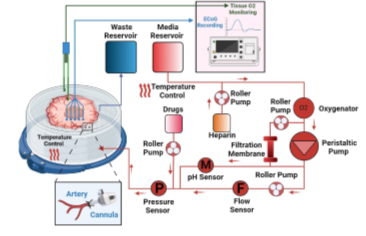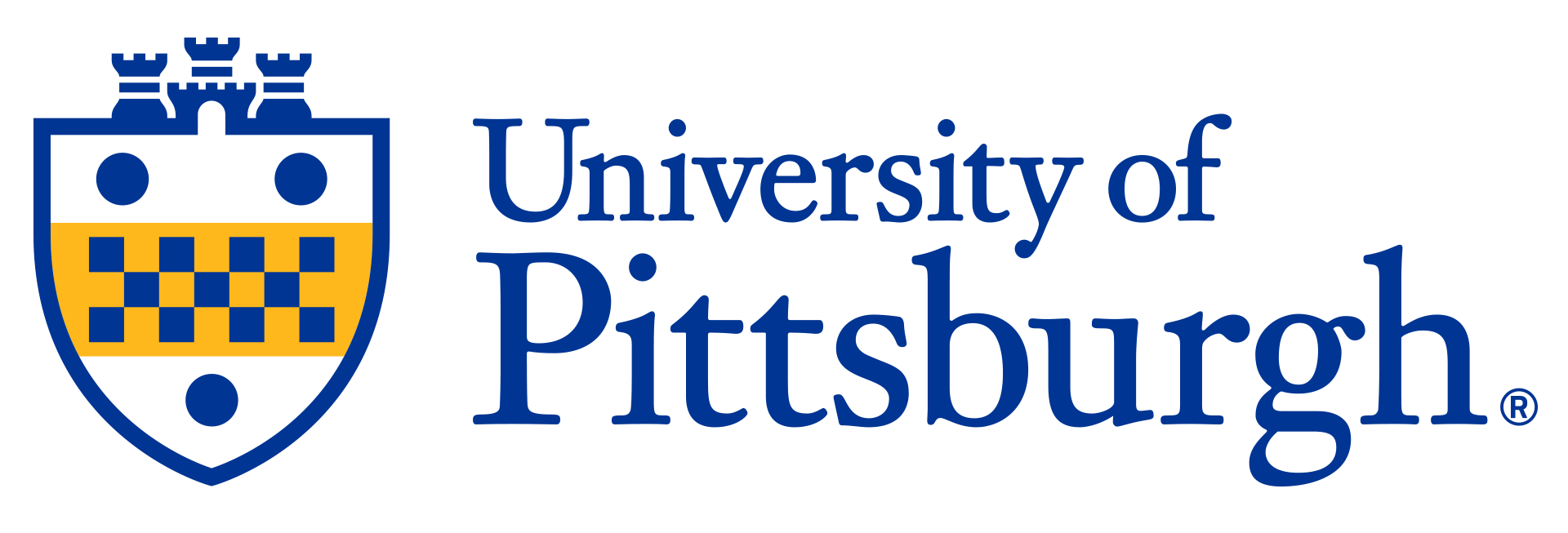A University of Pittsburgh researcher has developed a human brain-computer interface platform. The platform consists of perfusion apparatus with neural communication capacity. This first-of-its-kind platform can be used to keep excised brain tissue under physiological conditions during experiments while allowing for analysis or modulation of brain waves. This novel platform could enhance research of brain tissue ex vivo leading to new discoveries and clinical application in neurology.

A novel extracorporeal human brain perfusion platform has been developed. The platform is designed to maintain and analyze excised brain specimens under physiological conditions. The platform includes an input-output neuronal interface allowing for modulation and recording of brain waves.
Description
Given the complexities of the human brain there is a growing need to develop accurate research tools to study brain activity. Ex vivo brain slice electrophysiology is a growing area of research in neurology. To be most useful in the advancement of science ex vivo specimens should be studied under physiological conditions. This platform can replicate the human brain microenvironment by providing essential nutrients, oxygen, and waste removal with simultaneous and reliable stimulation and monitoring of cortical electrical activity.
Applications
• Study of ex vivo brain specimens
• Pharmaceutical research
• Brain-computer interface research
Advantages
This first-of-its-kind brain perfusion apparatus (BPA) has been developed with key components designed to mimic physiological conditions of the brain. Using a peristaltic pump system for controlled, pulsatile perfusion of brain specimens and a 25G arterial canula connected to the brain tissue vasculature, a customized perfusion medium based on human plasma is delivered to the brain specimen. Constant monitoring ensures the perfusion medium parameters, including temperature and oxygen levels, replicate natural cerebral perfusion conditions. The BPA also contains a neural communication system (i.e., an electrophysiological probe and electrode grid) allowing for stimulation and recording of ECG signals simultaneously from the brain specimen. A data acquisition system can monitor and assess neural activity in real-time in response to changes including brain wave modulation or introduction of pharmaceutical agents.
Invention Readiness
A prototype BPA has been developed. In addition, a method for extracting tissue biopsies, sample preparation, and verification of vascular patency of the sample using fluorescein dye was also developed. Perfusion through tissue vasculature with a human plasma-like media begins immediately post-resection. The rate is controlled by a peristaltic pump and replicates physiological blood flow conditions. Using this novel BPA, brain cortex activity can be stimulated, monitored and analyzed under near-physiological conditions and could be a reliable experimental research model.
IP Status
Patent Pending


